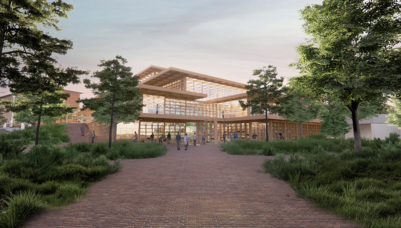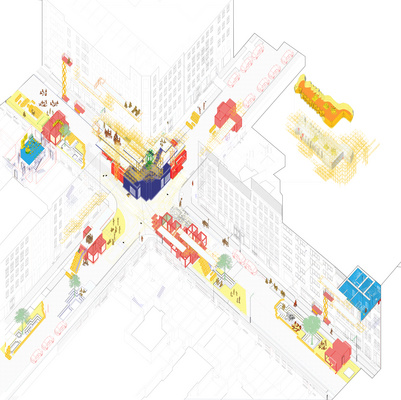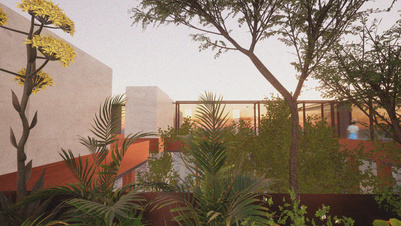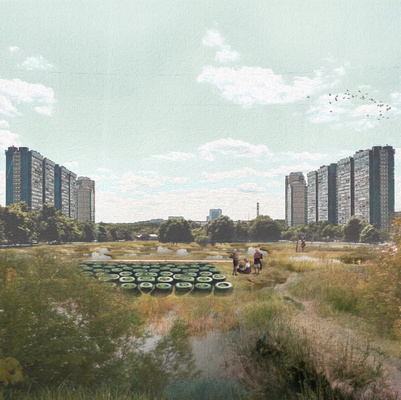This project proposes a postwar reconstruction plan for the city of Mosul, which is the third largest city in northern Iraq that was occupied by Isis from 2014 to 2017. The project seeks to explore the ruins of Mosul to see if more dignified temporary housing can be created for the displaced residents by assembling locally sourced materials in a modular way to encapsulate the voids in the facades.
The situation in Mosul remains challenging, with approximately 100,000 individuals displaced six years after its recapture from ISIS. The city's ruins and lack of resources have forced many inhabitants into a state of perpetual temporariness, residing in refugee camps located 60-80 km outside the city. Unfortunately, prospects for long-term habitation appear bleak, as government support is absent, leaving international organizations as the primary funding source.
Despite the devastation, commercial activities persist within the destroyed areas. Residents of the refugee camps engage in a daily commute, transporting their goods to the city in the early morning and dismantling their stalls before nightfall, before returning to the camps.
Considering the absence of government support and the prolonged state of ruin, the challenge lies in formulating a plan for the city's recovery. This project endeavors to explore a comprehensive, multidisciplinary approach, encompassing the holistic well-being of Mosul's residents as they strive to overcome the profound trauma experienced. Anchored in visions, aspirations, and symbolic actions, this project aims to foster the recovery and rejuvenation of the city and its inhabitants.
Research question
Can ruins be seen as structures of possibility where the inhabitants of Mosul can regain a sense of agency and dignity?


Building manual
Can there be created more dignified shelters for displaced inhabitants using an assemble guide with locally sourced salvaged materials in a modular way?
Vision
Can rehabiliation look like a collective endeavor and loop of responses that are constantly influx adapting to avaliable material and information?


Strategy - Six steps
A comprehensive strategy has been devised for the Al Maidan area, a highly devastated neighborhood within the old town consisting of ten neighborhoods. The decision to prioritize this area is due to its advantageous location by the water, abundance of cultural sites, and historical significance as a former hub of commercial activities. By focusing on the revitalization of Al Maidan, the strategy aims to address the area's unique potential for restoration and redevelopment.
Vision for a new urban fabric in Mosul





















































